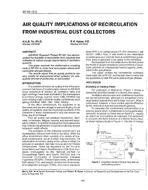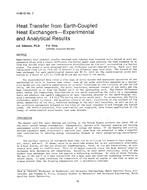Since 2006, High Performance Incentive (HPI) grants has been provided to qualified public schools in the state of California. This supplemental grant is available for new and modernization (additions to a site) school construction projects to promote the use of high performance attributes. The attributes are assessed by a High Performance Rating Criteria (HPRC) system, the criteria of which include promotion of energy and water efficiency, usage of natural lighting, improvement of indoor air quality, utilization of recycled materials and low toxicity emitting materials, and employment of acoustics which related to enhanced teaching and learning. This project is intended to determine the effect of HPI grants on improving academic achievement of students in public schools from the state of California. Academic improvement is assessed by the Academic Performance Index (API) system, which is based on the results from the California Standardized Testing and Results Program (STAR) and the California High School Exit Examination (CAHSEE) system. Only the high performance attributes that were potentially related to the improvements in student learning environment were included in this study. Two types of statistical analyses were conducted and reported to study the effects of interest: 1) comparison of academic improvement between HPI granted schools and non-HPI schools, 2) comparison of academic improvement within HPI granted school both before and after the completion of HPI project. The repeated measures analysis of variance (ANOVA) and a set of mixed models were employed in the two comparisons, respectively. The results of the statistical analyses regarding the academic improvement between HPI and non-HPI schools were largely non-significant. However, there was one exception; specifically, in the 2005-2006 school year (i.e., before the HPI grants were implemented) the HPI schools improved their API scores more than the non-HPI schools. The analyses investigating the second research question revealed no significant results indicating that there were not pre/post building completion differences for the HPI schools. These findings must be tempered by some limitations in the pilot data. Missing data were very prevalent in the analyzed data set which would limit the power to detect the difference. An additional limitation is that the year the HPI project was completed is unknown. The analyses could be improved if the building completion date was reliable, or more post-construction information regarding the HPI project could be revealed.
Citation: ASHRAE and AIVC IAQ 2016 Conf
Product Details
- Published:
- 2016
- Number of Pages:
- 8
- Units of Measure:
- Dual
- File Size:
- 1 file , 2.2 MB
- Product Code(s):
- D-2016IAQ-26


